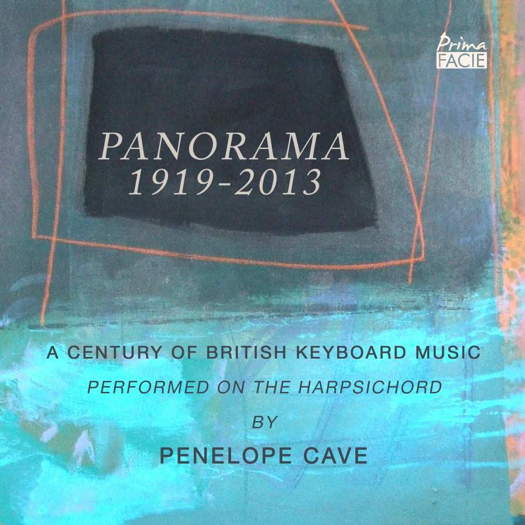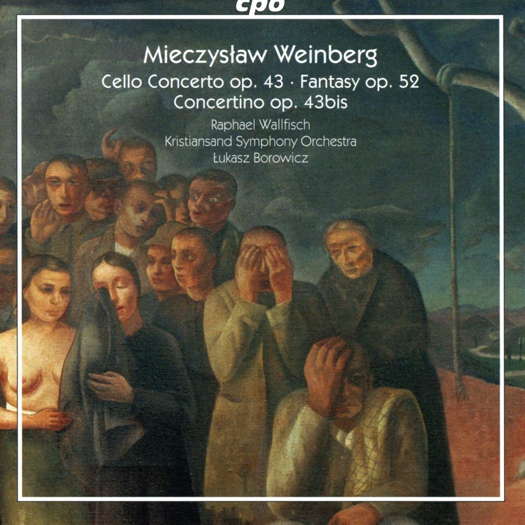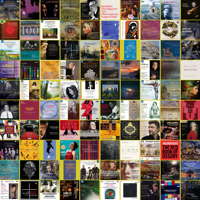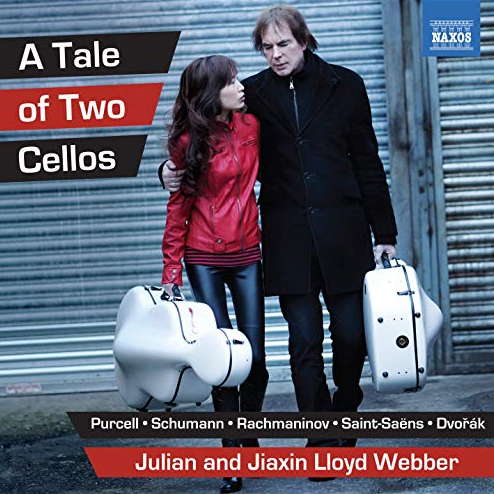 SPONSORED: CD Spotlight. A Fantastic Collection. Penelope Cave Panorama CD. Little-known harpsichord gems, strongly recommended by Alice McVeigh.
SPONSORED: CD Spotlight. A Fantastic Collection. Penelope Cave Panorama CD. Little-known harpsichord gems, strongly recommended by Alice McVeigh.
All sponsored features >>

Immediately Engaging
Raphael Wallfisch plays
cello concertos by Mieczysław Weinberg,
recommended unreservedly by GEOFF PEARCE
'This magnificent disc showcases the work of a composer who is still relatively under-represented in recording catalogues and on the concert platform.'
This magnificent disc showcases the work of a composer who is still relatively under-represented in recording catalogues and on the concert platform. Whilst he grew up in Poland, with the invasion of Poland in 1939, as a Jew, Mieczysław Weinberg (1919-1996) was first to flee to the USSR, then Tashkent, and then returned to the USSR once the German invasion had been turned back. Some good information in the enclosed booklet gives insight into how chaotic this time was for Weinberg. His music was often criticised by the Communist Party and by Stalin, as was his close friend Shostakovich, and he was only saved from execution by Stalin's death in March 1953.
The cello concerto is one of those immediately engaging works, right from the opening. The melodies are strongly tonal, and the style, at certain times, is reminiscent of Shostakovich. Indeed there are even references to the cello motif of Shostakovich's name, DSCH, which he used so effectively in his own cello concerto, written a few years after Weinberg's.
The first movement is built around a broad melody, first introduced in the cello, which maintains the lament throughout, while the orchestra performs an accompanying role. This slow movement introduces the DSCH motif towards the end.
Listen — Weinberg: Adagio (Cello Concerto)
(track 1, 6:00-6:42) © 2019 cpo :
The second movement starts very softly, but gradually the speed builds as a new theme is introduced in the cello. The orchestra provides much more colour and interest here. This music is dancelike but there is also a sardonic darkness, and a sorrowful tinge as well, with its outbursts of Jewish folk music from Weinberg's youth in Warsaw.
Listen — Weinberg: Moderato (Cello Concerto)
(track 2, 2:52-3:31) © 2019 cpo :
The third movement is a boisterous whirling dance, and provides some relief from the sadness of the previous two movements. Wallfisch shows what a fine cellist he is here. His playing is stunning, his sound warm, and his technique is assured. This is obviously a composer that appeals to him, and this certainly comes across in the fiery execution here. In the slower, more lyrical middle section, in which some of the sadness returns, you are not left to wallow in sadness or sentimentality as the opening mood is quickly restored. There are a few diversions before an extended cadenza which leads directly into the last movement.
Listen — Weinberg: Allegro (1) (Cello Concerto)
(track 3, 5:39-6:23) © 2019 cpo :
A tune builds up in low cello and accompanying clarinets before emerging - an odd opening, held back for quite some distance before the muted trumpet and other wind take it up. Again I am reminded of Shostakovich, all the while knowing that it is not. The main theme is rather cheeky and catchy, but again there is that hint of darkness about it. In about the middle of this movement, the tempo increases and it becomes frantic before the first tune is bought back with lower brass, and some of the opening movement's material is brought back into play. This rhapsodic and rather sorrowful mood is retained right until the end of the movement as it just melts away.
Listen — Weinberg: Allegro (2) (Cello Concerto)
(track 4, 8:46-9:39) © 2019 cpo :
The Fantasy Op 52 was written in 1952, shortly before the composer's imprisonment. It starts with a slow introduction which develops into a Mazurek (kujawiak). It is heartfelt and somewhat melancholic in nature in which the cello weaves the melody and the other instrumental forces are more of an accompaniment. This is followed by a more boisterous and vigorous musurek, at first introduced by the lower strings underpinned by brass, and then the cello takes over. There is joy here but also sadness, and an almost carnival atmosphere prevails. This leads to a cadenza before a shortened version of the later kujawiak returns. Thus the work is virtually a little concertino in itself.
Listen — Weinberg: Fantasy Op 52
(track 5, 9:20-10:20) © 2019 cpo :
The concertino for cello and string orchestra which ends this disc is slightly shorter than the Fantasy. The piece was a forerunner of what the Cello Concerto would later draw from. This is of a slighter, more intimate nature in that it does not employ the full orchestra, and there are thematic developments, extra subjects and a further movement to the concerto. This concertino had to wait until February 2017 for its first performance.
I would recommend this disc to everyone unreservedly, as the performances by all are of the first order, and the soloist is one of the great cellists of his generation. He certainly shines here. Weinberg is attracting increasing attention in the West, as he should, and many people regard him as favourably as they would Shostakovich and Prokofiev. He has an impressive output of works, including many operas and twenty symphonies, and I hope that I find many more performances of his works and recordings. Certainly if I was a cellist, I would want to include the works here in my repertoire.
Copyright © 22 March 2020
Geoff Pearce,
Sydney, Australia

CD INFORMATION - WEINBERG CELLO CONCERTOS - RAPHAEL WALLFISCH
FURTHER INFORMATION - MIECZYSŁAW WEINBERG
FURTHER INFORMATION - CLASSIC PRODUKTION OSNABRUCK (CPO)




